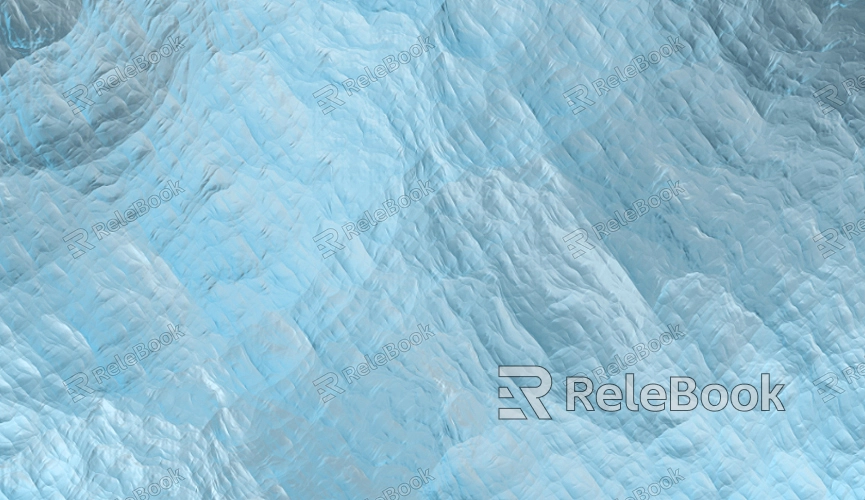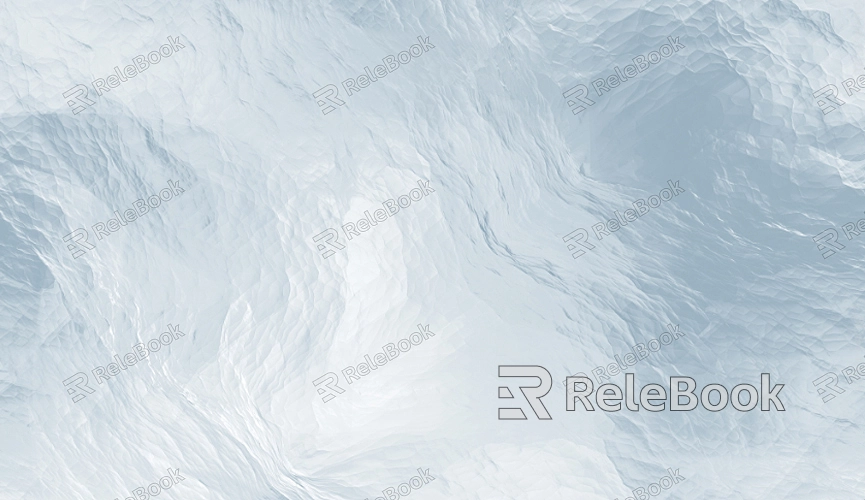How to Create Opacity Mapping Textures?

What Opacity Mapping
Opacity mapping is a technique used in 3D modeling to control how transparent or opaque a surface appears. Unlike traditional textures that affect the color or detail of a surface, opacity maps specifically influence the transparency levels. This is achieved through grayscale images where the varying shades of gray represent different levels of opacity. White areas in the map are fully opaque, black areas are fully transparent, and shades of gray represent varying levels of translucency.
1. The Basics of Opacity Maps
Opacity maps are usually grayscale images where each pixel's value determines the transparency of the corresponding pixel on the 3D model's surface. These maps work in tandem with color textures and bump maps to create more complex visual effects. For instance, a leaf texture might use an opacity map to make the veins and edges of the leaf semi-transparent, mimicking real-life foliage.
2. Applications of Opacity Mapping
Opacity maps are used in various applications, such as creating realistic glass surfaces, intricate lace patterns, and dense foliage. They are essential for any 3D model that requires varying degrees of transparency, helping designers achieve effects that would be difficult to replicate with color textures alone.
Creating Opacity Maps
Creating an effective opacity map involves several steps, each crucial for ensuring that the final texture performs as intended. Below, we outline the process from conceptualization to implementation.
1. Designing the Opacity Map
Begin by designing the opacity map based on the desired effect. If you're aiming for a frosted glass effect, your map might be a simple gradient or a noise pattern. For complex textures like lace, you’ll need a detailed design that specifies which areas are transparent and which are not. Design your map using image editing software like Adobe Photoshop or GIMP, keeping in mind that the final grayscale image will directly influence the transparency of your 3D model.
2. Creating the Grayscale Image
Once you have your design, convert it into a grayscale image. In Photoshop, you can do this by desaturating the image or using the "Channel Mixer" adjustment layer to remove color. Adjust the contrast to fine-tune the transparency levels. For a more nuanced opacity map, use gradients and patterns to create smoother transitions between transparent and opaque areas.
3. Exporting the Opacity Map
After finalizing the grayscale image, export it in a suitable format for your 3D software, such as PNG or TIFF. These formats support high-quality grayscale images and ensure that your opacity map will be accurately applied to the model.

Applying the Opacity Map in 3D Software
Once you have your opacity map, the next step is to apply it to your 3D model using your chosen 3D software. This process varies slightly depending on the software, but the general steps are similar.
1. Importing the Opacity Map
Open your 3D software and import the opacity map into the project. Most 3D programs, like Blender or Maya, allow you to import texture files directly into the material editor.
2. Configuring the Material Settings
Apply the opacity map to the material of your 3D model. In the material editor, locate the opacity or transparency settings and connect your grayscale texture to the appropriate channel. Adjust the transparency settings as needed to achieve the desired effect. For more complex setups, you might need to tweak additional settings such as alpha blending or refraction indices.
3. Testing and Refining
After applying the opacity map, render the model to test how the opacity affects the appearance. Make adjustments to the opacity map or material settings as needed to refine the effect. It’s often helpful to view the model under different lighting conditions to ensure that the transparency looks realistic in various scenarios.
Tips for Effective Opacity Mapping
Creating effective opacity maps requires practice and attention to detail. Here are some tips to help you achieve the best results:
1. Use High-Resolution Images
High-resolution opacity maps provide more detail and smoother transitions between opaque and transparent areas. Avoid using low-resolution images, as they can result in blocky or uneven transparency.
2. Pay Attention to Lighting
Opacity effects can look different depending on the lighting conditions in your scene. Test your opacity map under various lighting setups to ensure it looks realistic from different angles.
3. Optimize for Performance
Complex opacity maps can impact the performance of your 3D application, especially in real-time environments like games. Optimize your maps by reducing unnecessary detail and using efficient textures to balance quality and performance.
4. Keep Your Workflow Organized
Maintain an organized workflow by naming your texture files clearly and keeping them in a structured directory. This practice helps you manage your assets more efficiently, especially in larger projects.
Opacity mapping is a powerful technique in 3D modeling that enhances the realism and visual complexity of your model. Whether you're designing realistic glass, intricate patterns, or natural elements, mastering opacity mapping will take your work to the next level.To find high-quality 3D models and textures that you can use to practice and apply these techniques, visit Relebook and explore their extensive library of resources.
FAQ
What file formats are best for opacity maps?
PNG and TIFF are commonly used formats for opacity maps because they support high-quality grayscale images and maintain transparency information.
Can I use color textures as opacity maps?
No, opacity maps need to be grayscale images where the color values are interpreted as transparency levels. However, you can use color textures in conjunction with opacity maps to achieve more complex effects.
How can I troubleshoot issues with opacity maps not displaying correctly?
Ensure that the opacity map is correctly connected to the material’s opacity channel and that the grayscale values are properly defined. Check for any issues with the texture mapping coordinates and ensure that the image format is supported by your 3D software.
Are there any specific tools for creating opacity maps?
Adobe Photoshop and GIMP are popular choices for creating opacity maps. They offer a range of tools and features to design and edit grayscale images effectively.
How can I improve the performance of opacity maps in real-time applications?
Optimize your opacity maps by reducing their resolution and complexity. Use efficient texture formats and consider implementing level-of-detail (LOD) techniques to manage performance in real-time environments.

